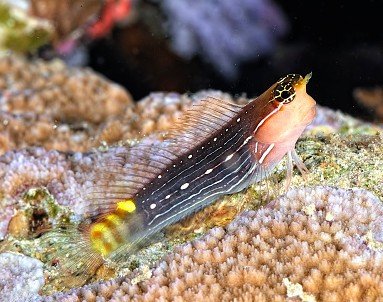
Blennies are small saltwater fish that are normally kept in the aquarium at home or in the office as pets or as a means of decoration and beauty or for entertaining purposes. There are many species of Blennies and they vary both in size and in temperament, etc. The question is, can they be Kept together? since they are all Blennies and are all saltwater fish. If you are seeking this particular answer, then read this article to the end.
Can Blennies live together? Blennies can be kept together in a tank, but it is not advisable because they are very aggressive and territorial.
Blenny fish are very different from each other despite being in the same family.
Some are big and some are smaller, some are very aggressive while some are semi-aggressive, etc.
They are not schooling fish and could hardly tolerate even their specie trespassing their territories without a fight.
Generally, Blennies are small fish and even their biggest species does not grow more than 5.5 inches, but despite that, they are normally provided with big tanks once they are more than one because they are hardly tolerant of each other and will be fighting if they happen to be in a small tank because of territory and food.
Don’t get it twisted, they will still fight even in a big tank for the fact they are more than one because they tolerate other fish more than their kind, and that’s why I don’t recommend keeping more than one Blenny in a tank unless the less aggressive ones like the tailspot Blennies.
If you must keep them together, although I don’t recommend this, then keep different species that are almost the same size and eat different things, for instance, Starry and a Midas blenny could be kept together without them fighting or they could fight a little because they are different species and Starry specializes on eating algae, while Midas Blennies does not, so they could be able to tolerate each other and I have seen some people keep them together with at least 75% success.
Midas and the Starry Blennies could also match together without much aggression because they are different species and have different temperaments and needs.
Tailspot Blennies are less aggressive and small too, they should be kept with small or medium-sized Blennies too to avoid them from getting bullied.
I won’t advise keeping smaller species like the Tailspot Blennies with bigger Blennies like the Starry or very aggressive and big species like the Lawnmower Blennies.
I don’t recommend keeping them together, but if you must keep them together, then keep them according to their sizes and avoid keeping the same species together, lastly avoid keeping two aggressive species together no matter the size of the tank because they will still fight and may stress other fish in the tank.
Do Blennies Get Along With Each Other?
Blennies are very aggressive and territorial toward each other, but they get along with other fish.
Despite being the same fish, they despise each other, including their species, and could hardly stay together without putting up a fight because of territory and food.
Blennies don’t get along with each other and shouldn’t be kept together in one tank.
Can I Have Two Blennies?
Yes, you can keep two Blennies together, but it is not recommendable because they are aggressive to each other.
If you are to keep more than one in a tank, the best shot for you is to mix different species and pray they don’t fight so much because the chance of having success with 2 or more of these fish together is 50/50, so the choice is all yours.
Can You Have More Than One Lawnmower Blenny?
No, Lawnmower or algae Blennies are one of the most aggressive species of Blenny fish and they don’t have any atom of tolerance for each other.
Although they are nice fish to have because they help with tank cleaning by eating algae and are very tolerant of other fish, keeping them with their kind is a nightmare because they will turn your fish tank into a battleground and will likely stress other fish to death when they fight.
Conclusion
Blennies are nice fish, I suggest you keep them with other fish instead of with their kind.
References
